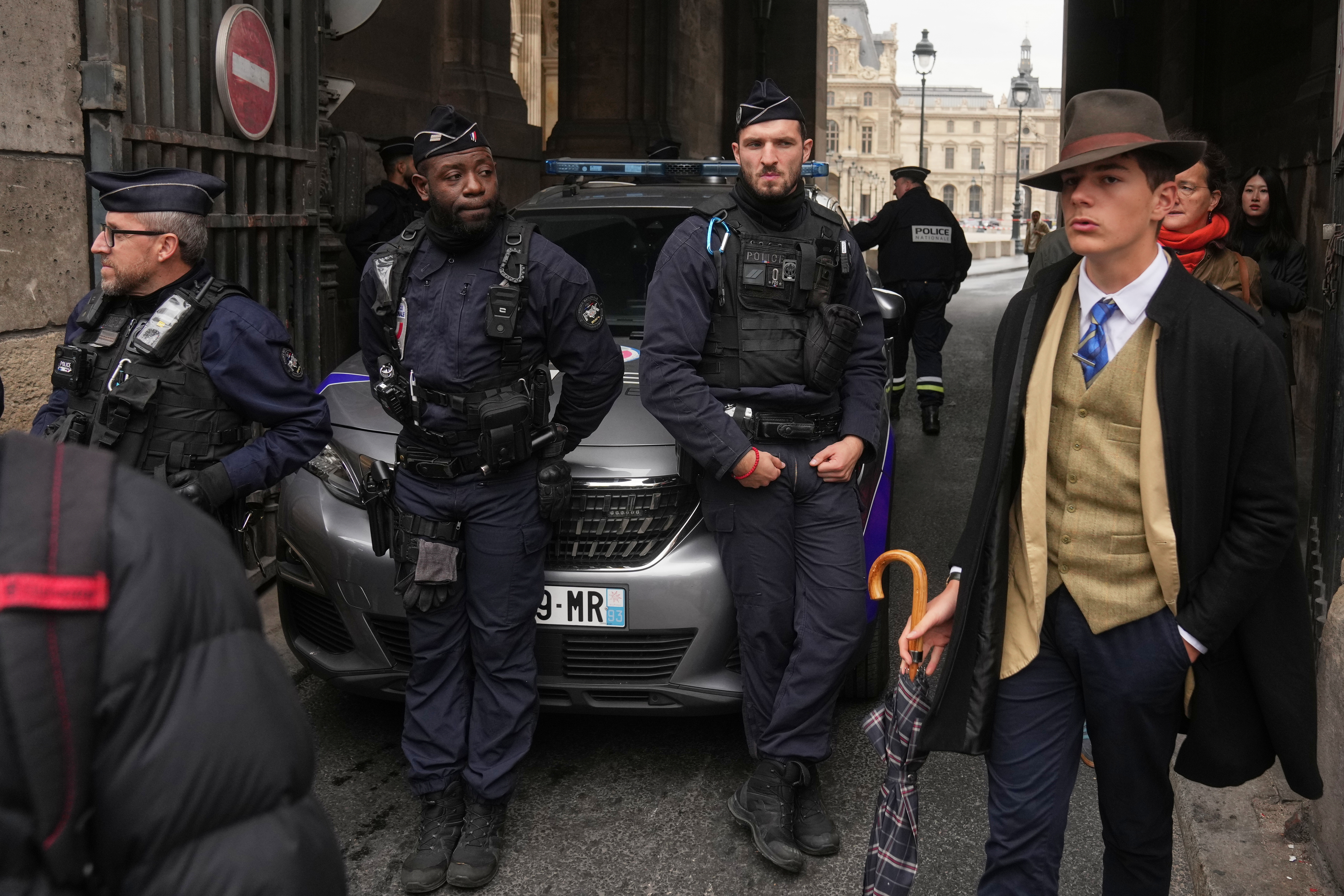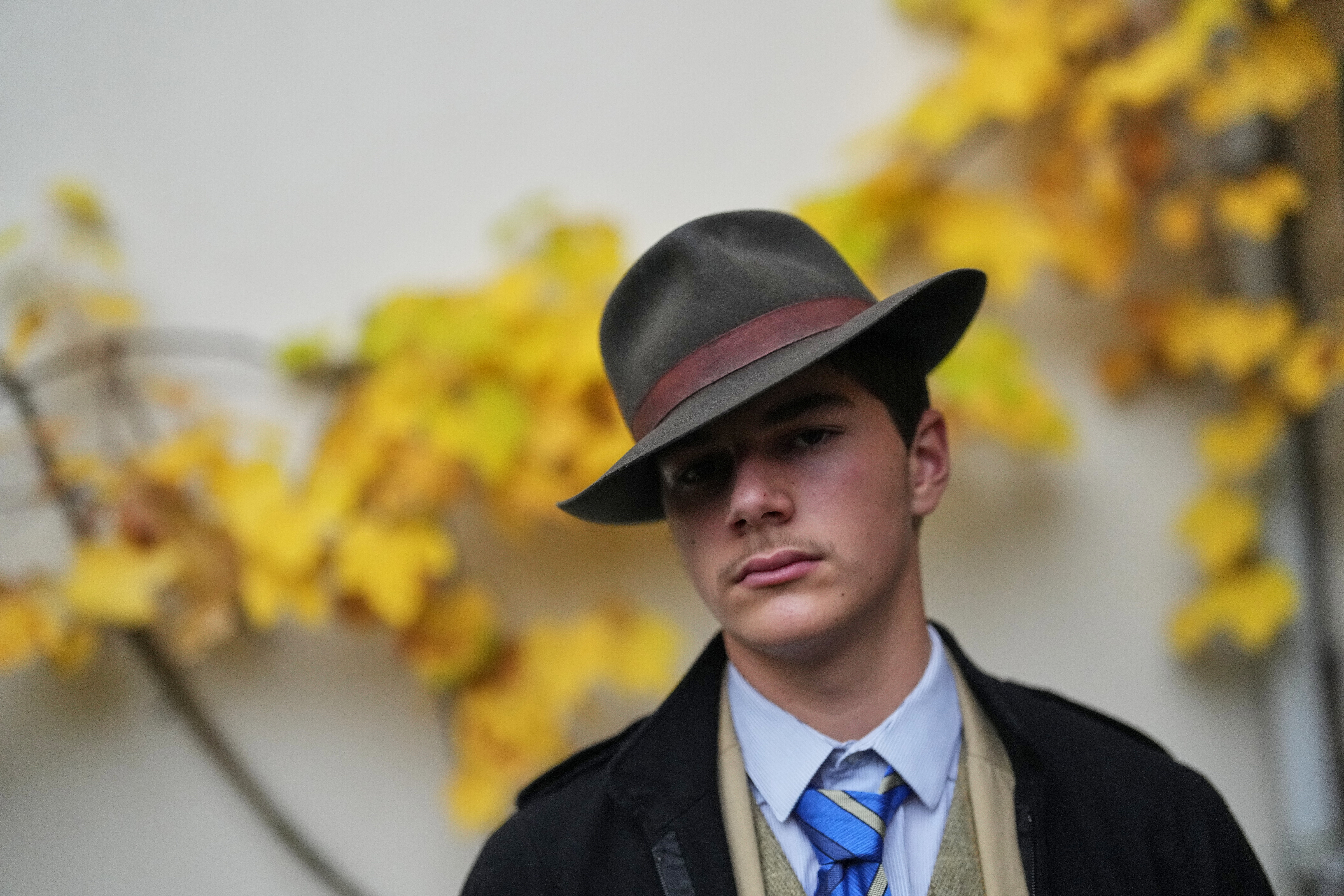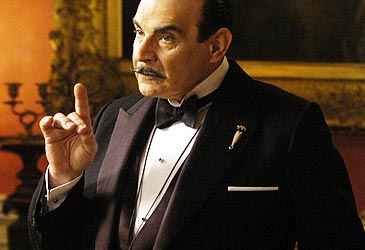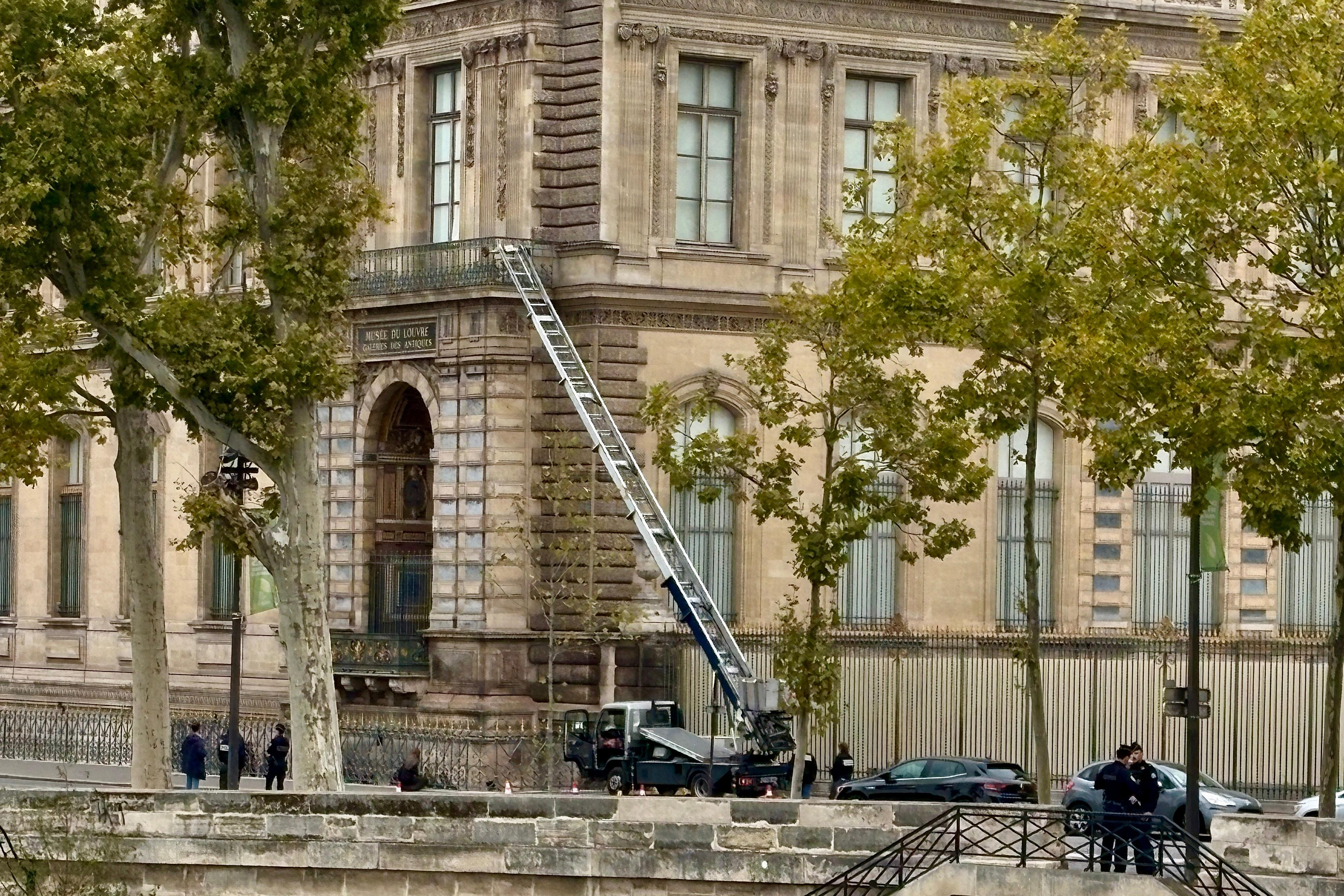When 15-year-old Pedro Elias Garzon Delvaux realised an Associated Press photo of him at the Louvre on the day of the crown jewels heist had drawn millions of views, his first instinct was not to rush online and unmask himself.
Quite the opposite. A fan of fictional detectives Sherlock Holmes and Hercule Poirot who lives with his parents and grandfather in Rambouillet, 30 kilometres from Paris, Pedro decided to play along with the world's suspense.
As theories swirled about the sharply dressed stranger in the "Fedora Man" shot - detective, insider, AI fake - he decided to stay silent and watch.
READ MORE: Radio icon John Laws dies aged 90

"I didn't want to say immediately it was me," he said. "With this photo there is a mystery, so you have to make it last."
For his only in-person interview since that snap turned him into an international curiosity, he appeared for the AP cameras at his home much as he did that Sunday: in a fedora hat, Yves Saint Laurent waistcoat borrowed from his father, jacket chosen by his mother, neat tie, Tommy Hilfiger trousers and a restored, war-battered Russian watch.
The fedora, angled just so, is his homage to French Resistance hero Jean Moulin.
In person, he is a bright, amused teenager who wandered, by accident, into a global story.
READ MORE: 'Dozy Don': Trump Oval Office event images go viral

From photo to fame
The image that made him famous was meant to document a crime scene. Three police officers lean on a silver car blocking a Louvre entrance, hours after thieves carried out a daylight raid on French crown jewels.
To the right, a lone figure in a three-piece ensemble strides past - a flash of film noir in a modern-day manhunt.
The internet did the rest. "Fedora Man," as users dubbed him, was cast as an old-school detective, an inside man, a Netflix pitch - or not human at all. Many were convinced he was AI generated.
Pedro understood why. "In the photo, I'm dressed more in the 1940s, and we are in 2025," he said. "There is a contrast."
Even some relatives and friends hesitated until they spotted his mother in the background. Only then were they sure: The internet's favourite fake detective was a real boy.

The real story was simple. Pedro, his mother and grandfather had come to visit the Louvre.
"We wanted to go to the Louvre, but it was closed," he said. "We didn't know there was a heist."
They asked officers why the gates were shut. Seconds later, AP photographer Thibault Camus, documenting the security cordon, caught Pedro midstride.
"When the picture was taken, I didn't know," Pedro said. "I was just passing through."
Four days later, an acquaintance messaged: Is that you?
"She told me there were 5 million views," he said. "I was a bit surprised." Then his mother called to say he was in The New York Times. "It's not every day," he said. Cousins in Colombia, friends in Austria, family friends and classmates followed with screenshots and calls.
"People said, 'You've become a star,'" he said. "I was astonished that just with one photo you can become viral in a few days."

An inspired style
The look that jolted tens of millions is not a costume whipped up for a museum trip. Pedro began dressing this way less than a year ago, inspired by 20th-century history and black-and-white images of suited statesmen and fictional detectives.
"I like to be chic," he said. "I go to school like this."
In a sea of hoodies and sneakers, he shows up in a riff on a three-piece suit. And the hat? No, that's its own ritual. The fedora is reserved for weekends, holidays and museum visits.
He stayed silent for several days, then switched his Instagram from private to public.
"People had to try to find who I am," he said. "Then journalists came, and I told them my age. They were extremely surprised."
He is relaxed about whatever comes next. "I'm waiting for people to contact me for films," he said, grinning. "That would be very funny."
In a story of theft and security lapses, "Fedora Man" is a gentler counterpoint - a teenager who believes art, style and a good mystery belong to ordinary life. One photo turned him into a symbol. Meeting him confirms he is, reassuringly, real.
"I'm a star," he says — less brag than experiment, as if he's trying on the words the way he tries on a hat. "I'll keep dressing like this. It's my style."
DOWNLOAD THE 9NEWS APP: Stay across all the latest in breaking news, sport, politics and the weather via our news app and get notifications sent straight to your smartphone. Available on the Apple App Store and Google Play.
from 9News https://ift.tt/M1upB6e
via IFTTT
Comments
Post a Comment